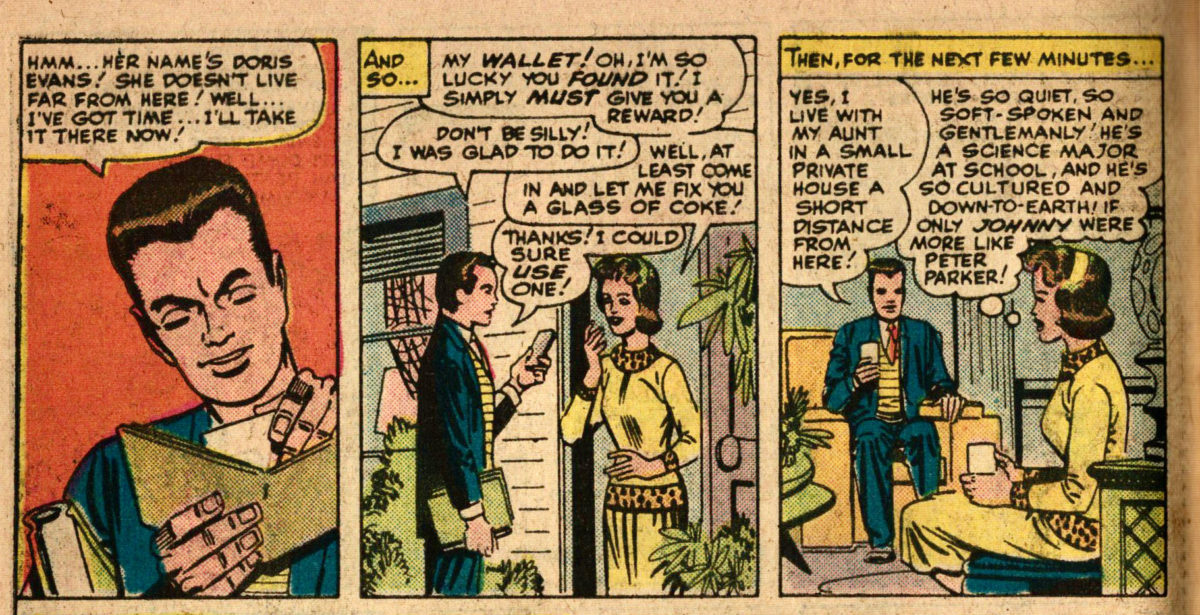Featuring: Daredevil
Release: November 4, 1965
Cover: January 1966
12 cents
Story: Stan Lee
Layouts: Jack Kirby
Lettering: Sam Rosen
.. and introducing: the matchless artistic wizardry of Marvel’s newest, and most eagerly-awaited, illustrator… the inimitable John Romita!
20 pages
| Previous | #458 | Next |
|---|---|---|
| Sgt. Fury #26 | Reading order | Daredevil #13 |
| Daredevil #11 | Daredevil | Daredevil #13 |
Ka-Zar have you, Zabu… Need no other! You are wisest… bravest… swiftest of all!
John Romita’s arrival is greeted enthusiastically by Stan. Kirby does layouts, as is common when welcoming new artists, as Stan doesn’t yet trust their storytelling chops (or his own).

Daredevil has a lack stability with revolving doors of legendary superstar artists. Bill Everett only made it one issue because he struggled with deadlines. Joe Orlando left after 3 issues because he got angry with Stan. Wally Wood left after 5 issues because he got angry with Stan. Good luck, John.
We’ve seen John Romita before in our “Prelude” posts. He was a regular artist on Captain America’s short-lived 1950s revival. His art has improved a lot in the intervening 10 years. He found his niche with the romance genre, and then left comics for a successful career in advertising. He draws good-looking people, in a way that artists like Kirby and Ditko don’t. Stan talked him into coming back to comics.
We talked about Romita’s career when we read Captain America #78. This is his new regular gig as a main artist at Marvel, but we’d seen him before providing finishes for Don Heck in Avengers #23, released 3 months earlier.
The story picks up where last issue left off, with Matt leaving Nelson & Murdock. The characters have lots of thoughts. Matt is leaving to let Foggy and Karen be together. Karen is sad because she loves Matt. Foggy thinks Matt is his best friend, but is happy that Karen can now be his. Matt doesn’t recognize that Karen loves him; he thinks her affection is just pity for a blind man. Matt books an ocean cruise to the other side of the world.
Continue reading “Daredevil #12”






























